Cleaning a decentralized ventilation system
A decentralized ventilation system continuously ensures the right room climate. Regular cleaning and care are required to ensure the full functionality of the system over the long term. Find out why cleaning the ventilation system is important and how to do it correctly in just a few minutes.
Consequences of a dirty decentralized ventilation system
If the ventilation system is not cleaned regularly, it may no longer be fully functional. As a result, various problems can arise, which affect both health and well-being as well as the building fabric. Dirty filters, fans or other system components lead to a reduction in the air volume flow, also known as the air throughput. The lower air throughput of the decentralized ventilation system can lead to a number of consequences that reinforce each other.

The first consequence of the low air volume flow is the inadequate removal of the used air, which increases the CO2 content in the room air. In addition to the CO2 concentration, the inadequate exchange of air also increases the humidity. The dehumidification of the interior is one of the most important tasks of the ventilation system in order to minimize the risk of condensation forming on cold components.
Components should generally be prevented from getting damp, so it should be ensured, especially in winter, that the interior temperature is reduced to a maximum of four degrees Celsius. With the increased humidity, hygienic problems can also arise. Moisturized components of a decentralized ventilation system provide a breeding ground for fly spores and mold and can thus contribute to the development of mold.
In addition to CO2 and humidity, pollutants can no longer be optimally removed due to the lack of air exchange in a dirty ventilation system. Air that is permanently enriched with pollutants also endangers health and can lead to headaches, malaise and coughing. A ventilation system that is cleaned regularly prevents the room air from being enriched with pollutants and continuously ensures clean air. Furthermore, there is the possibility that the inherent sound can be perceived as unnecessarily increased due to a dirty ventilation device. A clean, decentralized ventilation system ensures an optimal room climate and protects the residents from pollutants and their health effects.
Six steps to cleaning a decentralized ventilation system from inVENTer
Clean controlled living space ventilation
A decentralized ventilation system can be cleaned independently in just a few steps.
Step 1: Covering the inner cover inVENTer Flair for decentralized ventilation systems
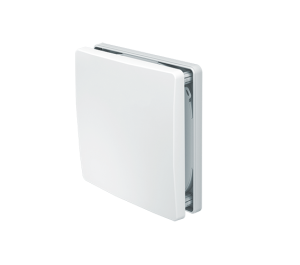
Recommendation: monthly cleaning of the inner panel
Step 2: cleaning the filter
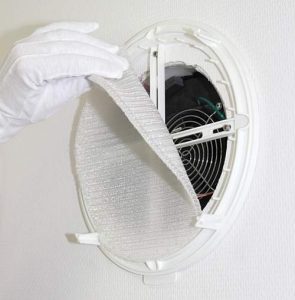
Recommendation:
Monthly exchange of the fine and pollen filter
Quarterly cleaning of the dust filter
Half-yearly exchange of the activated carbon filter
Step 3: cleaning the heat storage tank
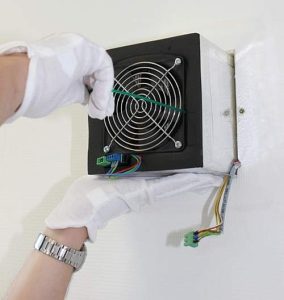
Recommendation:
Half-yearly cleaning of the heat storage tank
Semi-annual cleaning of the tail unit and fan and the protective grille on the fan
Step 4: wall mounting sleeve
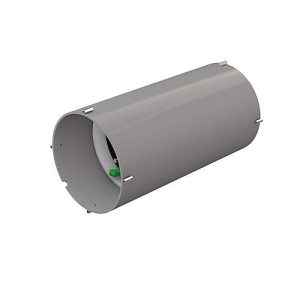
Once all components such as the inner panel, filter, heat storage tank and fan have been removed, the wall sleeve can be wiped out without any problems.
Recommendation: cleaning of the wall sleeve every six months
Step 5: cleaning the exterior finish
A distinction is made between the Smart / Nova weather protection hood, the Corner external finish and the Ohio weather protection hood. External closures protect the ventilation system embedded in the wall sleeve from a wide variety of weather influences.
Weather protection hood Smart / Nova

Outside closure corner
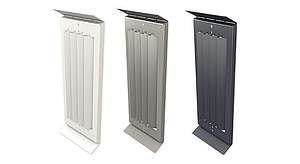
Weather hood Ohio
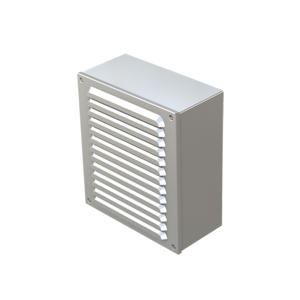
Recommendation: annual cleaning of the external closures
Step 6: Assemble the components of the ventilation unit in reverse order
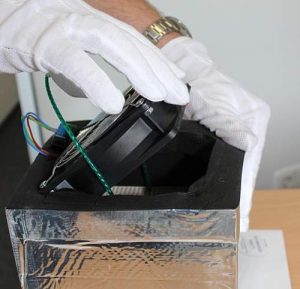
To ensure that it is easy to clean the ventilation units again, it should be ensured during installation that the handles on the individual components point into the interior. As a result, they are easily accessible again when they are dismantled again.
Cleaning costsa decentralized ventilation system

In contrast to central ventilation systems, cleaning controlled living space ventilation can be carried out at any time and without a specialist company. The user should only bear the acquisition costs for fine, pollen and activated carbon filters.
No special cleaning agents are required. A cloth, brush and warm water are sufficient for cleaning. All components of the ventilation device are easily accessible and therefore easy for the user to clean himself.
In addition, a decentralized ventilation system does not require any pipes in the wall, which would be difficult to access and therefore difficult to clean. Cleaning a controlled ventilation system is not only inexpensive, but also easy to use for everyone.
ConclusionCleaning and maintenance
With full functionality, a decentralized ventilation system can increase the well-being in your own four walls by always ensuring a pleasant room climate and a low concentration of pollutants and pollen. However, regular cleaning and maintenance of the ventilation equipment is necessary. The decentralized ventilation system has a significant advantage over centralized ventilation systems in terms of handling and the cost of cleaning. It can be cleaned and serviced by yourself in a few simple steps and its functionality is retained.


